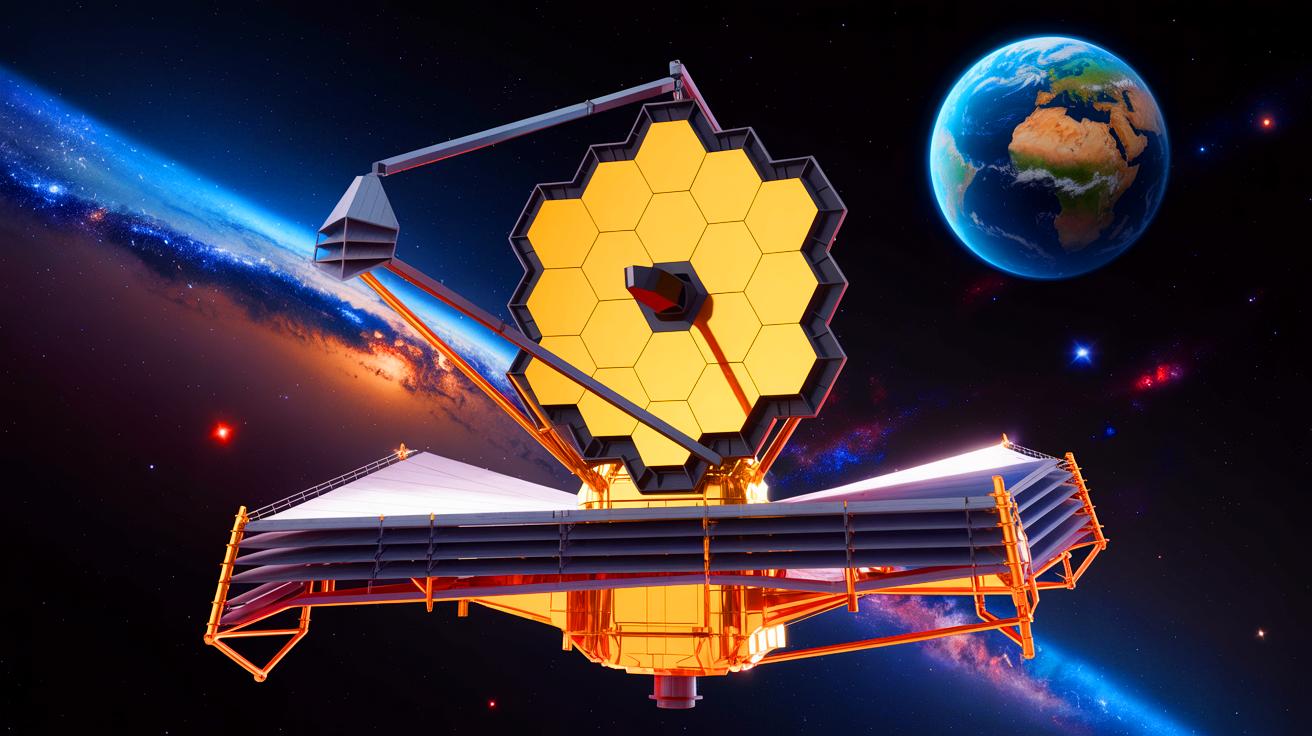- 🔭 The James Webb Space Telescope is designed to detect chemical signatures in exoplanet atmospheres, offering insights into potential extraterrestrial life.
- 🌌 Biosignatures are crucial for identifying life, and the telescope’s advanced spectroscopic capabilities allow it to analyze light from distant worlds.
- 🚀 While JWST faces challenges like light interference from stars, it focuses on planets around red dwarf stars to enhance detection accuracy.
- 🔍 JWST is a significant step forward in space exploration, laying the groundwork for future missions that may eventually discover the elusive signs of life.
The James Webb Space Telescope (JWST) is a groundbreaking tool launched to delve into the origins of life and expand our understanding of the universe. As scientific interest peaks, the telescope’s capabilities are under scrutiny to determine if it can detect signs of extraterrestrial life. While initial reports of life on exoplanet K2-18b were premature, JWST’s ability to identify chemical substances related to life on Earth sparks curiosity. This article explores the potential of the James Webb Telescope, its challenges, and the role it might play in answering the age-old question: Are we alone in the universe?
The Hunt for Biosignatures
Finding evidence of life beyond Earth hinges on detecting biosignatures, which are chemical traces indicative of life processes. These traces, whether in an atmosphere or on a planet’s surface, could suggest life once existed or currently thrives. On Mars, for example, robots physically explore the surface, actively searching for these signs. However, when it comes to distant exoplanets, direct exploration is impossible. Instead, scientists rely on telescopes like the James Webb to observe these worlds from afar.
The James Webb Telescope is uniquely suited for this task, designed to detect the faint chemical signatures in an exoplanet’s atmosphere. With its advanced spectroscopic capabilities, the telescope can analyze light wavelengths to identify potential biosignatures. This technique is pivotal as it allows scientists to study planets several light-years away. However, the challenge lies in the accuracy and reliability of these detections, heavily dependent on the telescope’s precision and environmental conditions.
The Complexities of Detection
While JWST is capable, the real question is the reliability of the data it gathers. Detecting biosignatures involves analyzing a planet’s atmosphere, which is easier said than done. The telescope must first identify planets within the “habitable zone” of their stars, where conditions might support life. Once identified, JWST uses its spectroscopic tools to look for chemical signatures.
However, this process is fraught with challenges. Light from a star can interfere with the readings, potentially leading to false positives. For accurate detection, JWST focuses on planets orbiting red dwarf stars, as these stars emit less intense light, reducing interference. This limitation means that only certain types of stars are suitable for study, narrowing the pool of potential discoveries. Despite these hurdles, the telescope’s findings are crucial for future missions and studies.
James Webb: A Step Forward, Not the Ultimate Solution
The James Webb Space Telescope is a monumental achievement in astrophysics, offering new insights into the cosmos. While it may not provide definitive proof of extraterrestrial life, it represents a significant step forward in our quest for understanding. Its role is to lay the groundwork for future explorations and discoveries.
By revealing intricate details about the universe, JWST has already revolutionized our approach to space science. It has unveiled previously unknown cosmic structures and provided a clearer view of the universe. However, the question remains: Will it find life elsewhere? The most honest answer is not yet. Nonetheless, JWST is a valuable tool, setting the stage for future missions that may eventually uncover the elusive signs of life we seek.
The Future of Extraterrestrial Exploration
Looking ahead, the James Webb Space Telescope will continue to be a cornerstone of space exploration. As scientists analyze its data, they will refine their techniques and expand their understanding of distant worlds. This telescope is just the beginning, a precursor to even more advanced technologies that will further push the boundaries of what we know about the universe.
While JWST may not be the ultimate solution to discovering extraterrestrial life, its contributions are invaluable. It inspires ongoing research and encourages the development of new technologies. As we stand on the brink of new discoveries, we are left to ponder: How much closer are we to finding life beyond Earth, and what mysteries will future telescopes uncover?
Our author used artificial intelligence to enhance this article.
Did you like it? 4.5/5 (28)
